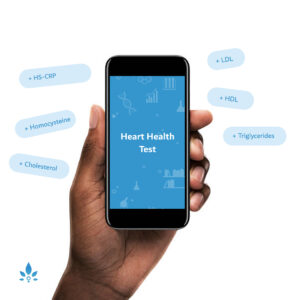Causes and Treatments for Sudden Arrhythmia Death Syndromes


Each day, hour, minute, and second, your heart is beating to a regular rhythm that provides life-giving oxygen, blood, and nutrients to your body. If something occurs to disrupt the normal heart rhythm, the effects can be fatal. A sudden arrhythmia death syndrome is a condition that affects the heart rhythm.
Sudden arrhythmia death syndrome (SADS) is a blanket term used to describe sudden disruptions in the heart rhythm, usually caused by a genetic or undiagnosed heart condition. This condition can be shocking because it typically occurs in young people who appear otherwise healthy and have no real abnormalities of the heart in terms of its shape.
An estimated 4,000 people under age 35 die from SADS each year, according to the SADS Foundation. Because many of these young people exhibited some warning signs prior to the tragic event, it’s important to know the signs and symptoms of a potential SADS case, which include:
- Family history—This is the most significant contributing factor to SADS. If a family member died from SADS, a child has a 50 percent likelihood of inheriting the condition, according to the SADS Foundation. This includes any family member who died under age 40 from an unexplained cardiac event.
- Fainting symptoms—Young people with SADS tend to experience an initial bout of fainting or seizure while exercising or after being startled. If your child has fainted for a largely unexplainable reason, such as when excited or happy, see your child’s physician.
- Chest pain or difficulty breathing—If your child experiences chest pain or trouble breathing during exercise, especially low-impact exercise, this can be a SADS warning sign. While children can experience shortness of breath, it should be appropriate to their level of activity. If he or she is breathing harder than anticipated, see your child’s physician.
What causes SADS?
Physician associate SADS with a number of causes. These include:
- Coronary artery spasm
- Electrolyte imbalances, such as low potassium or magnesium
- Idiopathic ventricular fibrillation
- Long QT syndrome, which causes 10 to 12 percent of sudden infant death syndrome (SIDS) cases, according to the SADS Foundation. The “QT” refers to a heart rhythm reading on an EKG. A long QT reading can cause heart dysrhythmias that lead to SADS because the heart cannot beat properly.
- Taking certain medications
- Wolff-Parkinson-White syndrome
Treatments for SADS
If your child has been identified as being at risk for SADS, their primary care doctor will send them to see a pediatric cardiologist get more information. That physician will determine how to decrease risk as well as if any treatment is necessary. For example, some patients may be advised to avoid extreme physical exertion, such as competitive sports. Others may be advised to take medications that promote regular heart rhythms, such as a beta-blocker or potassium supplements.
Children whose hearts have difficulty maintaining a steady and/or regular rhythm may require a pacemaker or automatic implantable defibrillator, which will “shock” the heart back into a regular rhythm if the heart goes out of rhythm.
Many schools and community organizations have installed automatic external defibrillators, or AEDs, in schools to assist young people and adults who may exhibit signs of a sudden cardiac event, such as loss of consciousness. When you go to a school and especially a sporting event, familiarize yourself with the location of these AEDs should they become necessary to use.
Sources:
- American Family Physician
- Sudden Arrhythmia Death Syndrome: Importance of the Long QT Syndrome.
Heart and Education in Heart - Sudden Arrhythmic Death Syndrome.
Cleveland Clinic - Arrhythmia: Sudden Cardiac Death.
SADS Foundation - Warning Signs of SADS.
Powered by Bundoo®












































